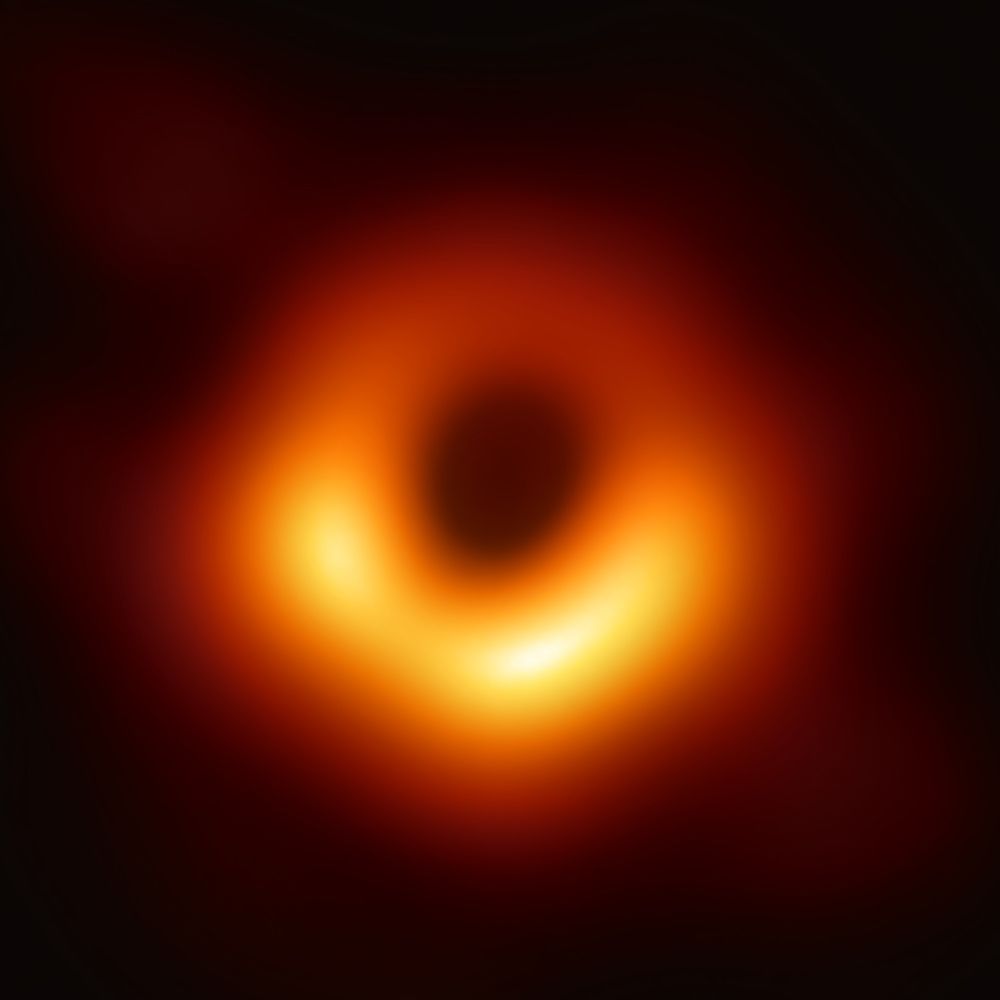
Image: The bright region immediately surrounding the event horizon of the supermassive black hole in the core of the elliptical galaxy M87. [EHT]
This feature was originally published in the Spring 2019 (vol. 48, no. 2) issue of Mercury magazine, an ASP members-only quarterly publication.
Well, the wait is over. On April 10, a series of international press conferences gave audiences their first-ever view of a black hole: an image of a fuzzy black circle surrounded by a blotchy smear of yellow and red that may transform astrophysics. But the road to this historic achievement was long and arduous.
Astronomers of the Event Horizon Telescope (EHT) project had been poring over their data since April 2017, when they trained a world-spanning telescope on two supermassive black holes. Their goal was to penetrate through light-years of dust and gas and capture images of these enigmatic bodies.
Although the scientific community—and the public at large—waited well over a year for results, the team wasn’t about to be rushed. After two decades invested in designing and building their array, developing their simulation models, and refining their data processing methods, the EHT scientists were intentionally slow and deliberate. They wanted to get it right.
To continue reading this feature, become an ASP member today and receive Mercury magazine every quarter. ASP members can also access the archive of every digital Mercury issue published since 2007.
—

Steve Murray is a freelance science writer and NASA Solar System Ambassador. A former research engineer, he follows developments in astronomy, space science, and aviation. Read more articles by Steve.

